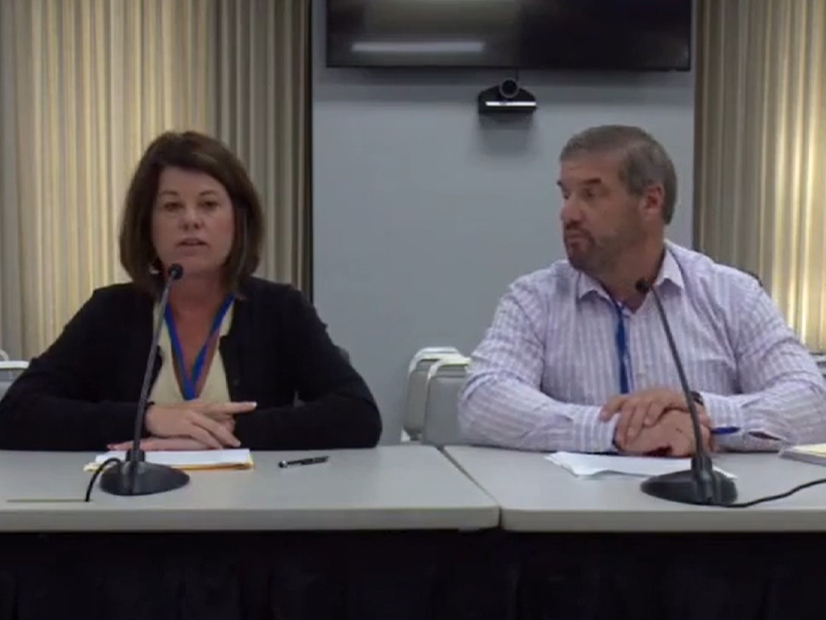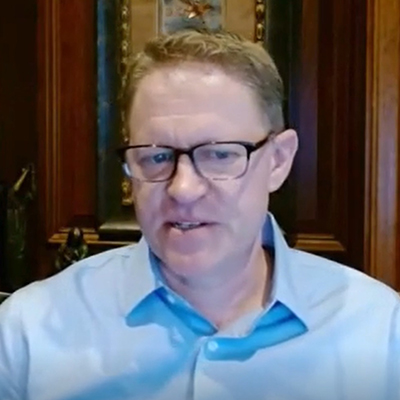
A month after its capacity auction indicated a Midwestern supply scarcity, MISO’s Independent Market Monitor and a MISO vice president debated the path forward in front of Illinois regulators.
During a special policy session of the Illinois Commerce Commission (ICC) last Friday on MISO’s resource adequacy, ICC Chair Carrie Zalewski said the commission wanted “to gain a fuller understanding” of the 2022-23 planning resource auction (PRA) clearing at the cost-of-new-generation entry and to discuss steps to preserve reliability and affordability as the RTO’s resource mix transitions.
Zalewski said the $236.66/MW-day clearing price in MISO Midwest is a significant increase over the $5/MW-day clearing price during the 2021-22 capacity auction. The grid operator has told stakeholders to prepare for the possibility of temporary, controlled load sheds during the summer months because of a 1.2 GW capacity shortfall in the Midwest. (See MISO’s 2022/23 Capacity Auction Lays Bare Shortfalls in Midwest.)
Melissa Seymour, MISO’s vice president of external affairs for its Central Region, said members must build more capacity quickly. The IMM’s David Patton said the RTO is duty-bound to design an auction that results in higher clearing prices to prevent its existing thermal fleet from hemorrhaging more units.
Seymour said accredited capacity in MISO Midwest sank about 3.2 GW since the 2021-22 auction, primarily because of coal plant retirements. She said that though MISO continues to add more installed capacity year-over-year, retiring thermal generation has higher accredited capacity values than the accredited value of new renewable generation.
“Wind and solar do not get the same capacity credit as a traditional thermal unit,” Seymour told the ICC. MISO’s wind generation receives about a 15.5% capacity credit, while solar receives an approximately 50% capacity credit during summer peak times.
“We believe that unless more capacity is built over the next year, we’ll continue to see what we saw in this auction continue in the future,” she said. “We will do everything we can to make sure the overall grid stays reliable and dependable, and that the system won’t be compromised. But we do have less than a one-day-in-10 [year] loss-of-load probability because of the auction not meeting the requirements, so there is a chance that we might have to take actions to prevent blackout situations or rolling brownout situations.”
Seymour said MISO will likely take steps to increase visibility into the supply and demand picture ahead of capacity auctions.
She also said she thought that some market participants had more capacity that they could have offered, namely demand response resources. No market participants violated MISO’s 50-MW withholding threshold in the 2022-23 auction.
Seymour predicted high clearing prices will continue until MISO’s members bring more capacity online. But she also said the RTO’s proposed seasonal auction design — waiting on FERC approval — and new capacity accreditation calculations based on actual generation availability should help alleviate future shortages. (See MISO’s Seasonal Capacity Proposal Opposed at FERC.)
But Seymour also reminded commissioners that MISO’s capacity auction is a residual auction that functions like a “balancing market,” and that it isn’t meant for market participants to procure all resources to meet demand.
IMM: Capacity Auction Design the Culprit
Patton laid the shortfall’s blame squarely on “poor market signals” in the capacity auction.
“It’s not hard to understand how we got here,” Patton said. He told the ICC that the “unfortunate truth” is that MISO’s capacity market isn’t designed to signal when to stave off generation retirements or make investments. He said the vertical demand curve isn’t “aligned” with the reliability value of capacity and clearing prices have been “grossly understated” for years.
 MISO IMM David Patton speaks to the Illinois Commerce Commission | ICC
MISO IMM David Patton speaks to the Illinois Commerce Commission | ICCPatton said about 4 GW of MISO’s merchant capacity has retired over the past four years because of economic reasons. He said some of that generation would have remained online had clearing prices more closely reflected a unit’s going-forward costs of about $110-$175/MW-day. He said an efficient capacity price might even cover some of the units’ capital costs for new emissions controls to comply with environmental regulations.
“If we’re going to learn anything from this, we ought to learn that market signals really do matter and we ought to fix this market so that it will help the region maintain enough capacity to maintain reliability,” Patton said.
He urged the commissioners to support a sloped demand curve in MISO’s auction.
“That’s the only thing in the long term that’s going to solve this problem,” Patton said. “And I think the only reason MISO doesn’t have it is because the states have opposed it. And now, one-by-one, the states are starting to either be interested or support it. And I think the more states that voice their support for it, the more momentum there will be to come to a consensus.”
Illinois, as a retail choice state, should weigh in on the demand curve and persuade the Organization of MISO States to move the issue forward, Patton said.
He also pushed back on the argument that lower-accredited renewable energy is ousting higher-accredited thermal units.
“It’s not as if participants say, ‘I’m going to retire a 100-MW gas plant and replace it with 100 MW of wind,’ imagining in their minds that that’s a one-for-one tradeoff. The reality is the investment in renewables is happening independent of the decision to retire resources,” Patton said. “So, it’s true that they’re coming in at lower accredited values, but the real problem is that a number of the resources that retired really should not have retired, regardless of what was going on in the renewables side of the equation. It’s just that we didn’t give them the economic incentive to stick around.”
Seymour countered that MISO’s capacity auction is not designed to incentivize resources or bring new capacity online because states oversee their own resource adequacy planning.
She agreed that a sloped demand curve in previous auctions may have led to higher auction prices and driven some generation construction and prevented some generation from retiring. She also said MISO’s pending request at FERC to employ a minimum capacity obligation rule, where load-serving entities must procure 50% of their load obligation ahead of the auction, may assuage capacity deficiencies.
Patton said he didn’t see how a minimum capacity rule would increase supply. He said the rule would only have load-serving entities bilaterally contracting for the same stock of surplus.
“It’s hard to imagine that it’s going to increase the amount of physical supply that exists. It just moves some of the settlements from the PRA into the bilateral market,” he said. “Until you fix the price in the PRA, you’re not creating an incentive for anybody to build anything that would help you get out of the shortage.”
MISO expects about 11 GW of generation to retire over the next year, Seymour said.
“Excess is going away in most instances. We’re seeing people come more in balance or a little bit short of their total requirement, mostly because people are deciding to retire their older units … and not replacing [with] a one-for-one … whether it be thermal or wind and solar,” Seymour said.
She said federal environmental regulations and utilities’ own green goals are creating a “gap” between resource retirements and resource additions. MISO expects to be in a “mind-the-gap” situation in the 2023-2025 timeframe, Seymour said.
In a majority-renewable future, the RTO is probably going to have resources that don’t run very often to provide inertia, frequency response and voltage support, she said.
ICC Commissioner Maria Bocanegra said one of her biggest fears is repeating a blackout situation similar to ERCOT’s prolonged blackouts during the February 2021 severe winter storm.
Seymour said that unlike ERCOT, MISO is not an island and can import considerable amounts of power.
“That is one of the biggest things that we have going for us that ERCOT didn’t,” she said. “They had minimal access to anything outside of the ERCOT footprint to be able to import to serve their need.”
Seymour reminded commissioners that during the same winter storm, MISO was able to import supply from PJM and in turn, export power to SPP.
Patton Says Real Threat Begins Next Summer
Patton told commissioners that he doesn’t expect blackouts in MISO this summer.
“I think load shed in MISO is extremely unlikely this summer, because some of the resources that didn’t sell in the capacity auction are actually still going to be around during the summer,” he said. “They’re retiring after the summer. So, I don’t think the threat of load shed is very high for MISO for this planning year. I’m a little more worried about after some of these retirements that are in process disappear … and they won’t be there next summer.”
The IMM allows retiring generators an exemption from offering into the PRA when they plan to retire and won’t be available for the entire planning year.
Late-spring heat paired with seasonal maintenance outages has already forced MISO to issue two emergency advisories before the June 1 start of the 2022-23 planning year.
MISO declared a maximum generation emergency alert Friday afternoon for its Central region. The grid operator said it was experiencing forced generation outages, above normal temperatures and higher than forecasted load. On Tuesday, the RTO declared conservative operations for its South region through Friday.
The Industrial Energy Consumers of America (IECA) sent a letter to FERC Chair Richard Glick, urging the commission to issue a notice of proposed rulemaking to overturn the state opt-out for demand response.
IECA CEO Paul N. Cicio said it is “of immediate importance” that FERC reverse the opt-out, which allows states within a regional grid to block distributed resources from participating in wholesale energy markets.
“This action will reduce inflation, electricity costs and improve reliability,” the IECA wrote. “We believe that your action will impact the next PRA in MISO and help to drive down prices of which all consumers will benefit. This could ensure that our factories continue to operate and maintain jobs at a time when our economy desperately needs the assistance.”
IECA argued a continuation of the rule has contributed to MISO’s capacity crisis.

